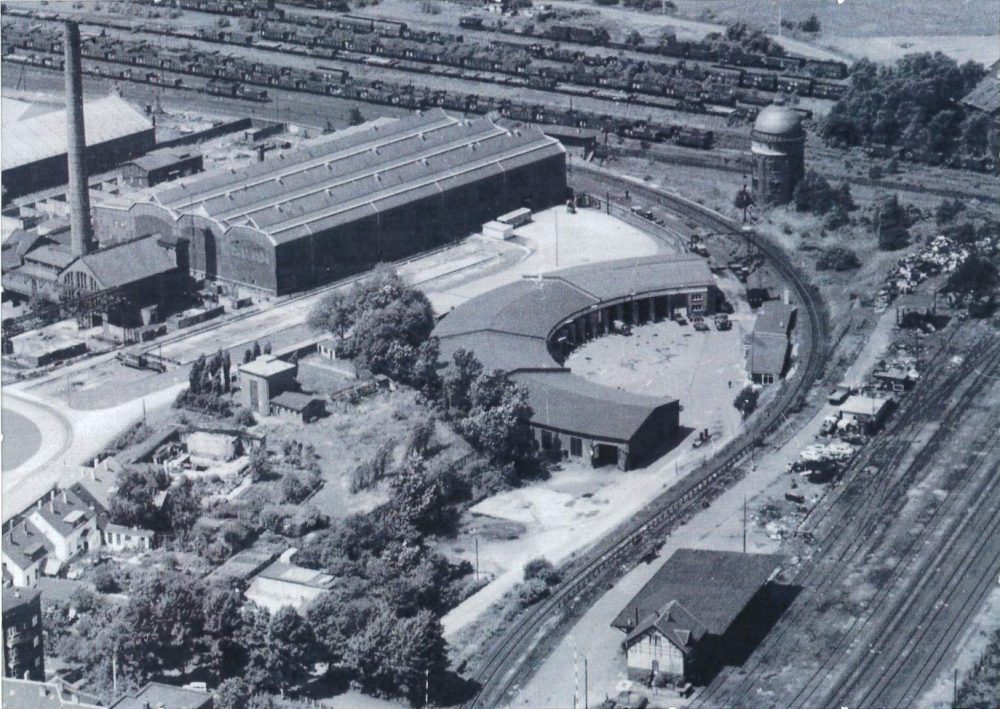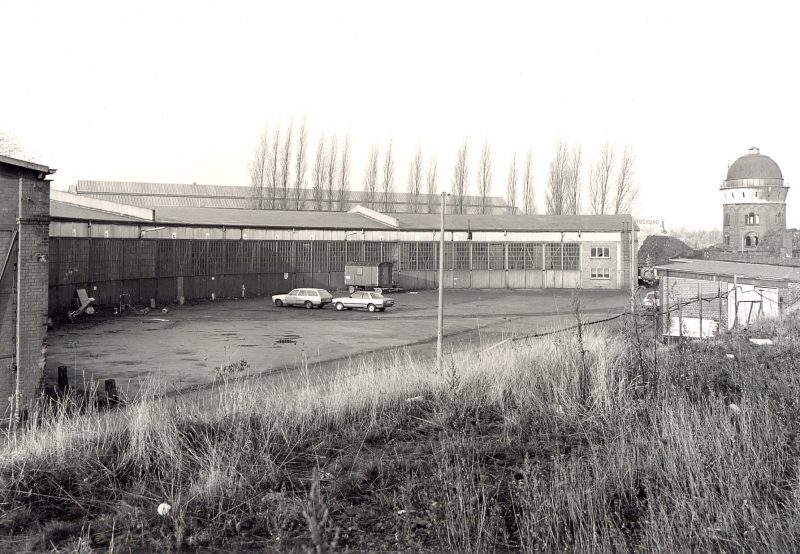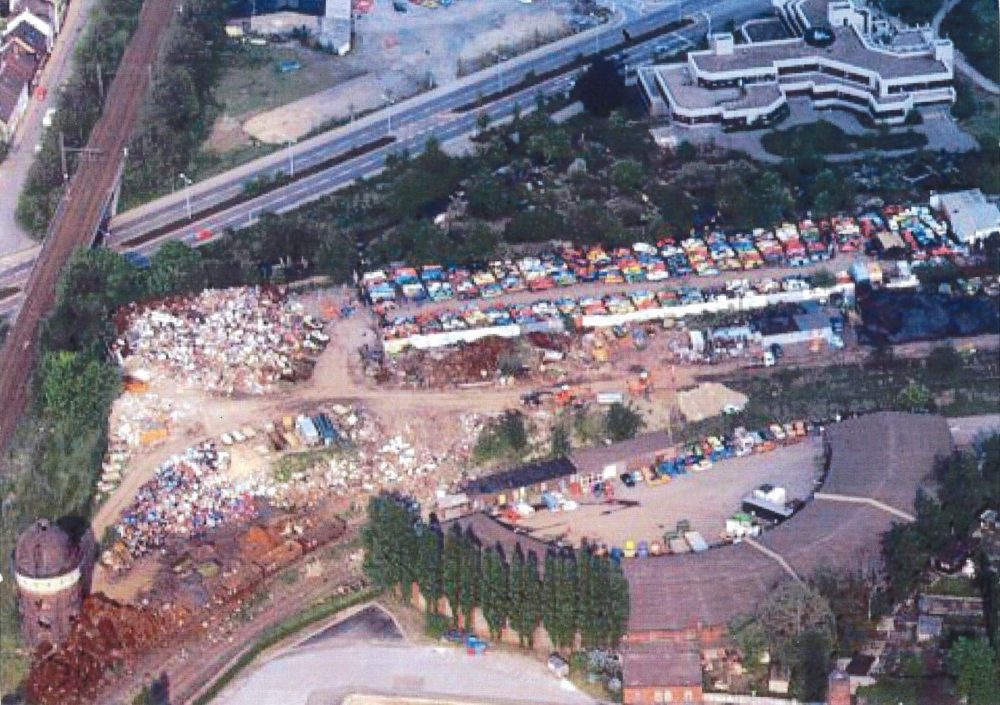Historic Background
"The former ring shed of the Broich railway station was established around 1875. It has existed in its present form since 1918. In the years 1914-1918, the semi-circular, single-storey hall was converted for buses, i.e. as a motor vehicle hall. The brick, steel and glass construction, which has survived unchanged, is a now very rare example of this type of industrial building. The complex is significant for the history of man, working and production conditions."
Registration as a monument from 06 October 1988
The building, constructed around the turn of the century as part of the then Reichsbahn repair works in Speldorf, was used to house steam locomotives until the destruction of the turntable in front of it in 1943, which were supplied from the associated water tower. From the 1950s onwards, the roundhouse housed the central office of the federal railway buses until 1968, after which it was used only as a repair workshop by a haulage company based on the site.
Forced labour camp at the Reichsbahnausbesserungswerk
During the war years from 1942 onwards, almost 25,000 women, men and children were exploited as forced labourers in Mülheim. There were at least 55 large forced labour camps throughout the city and around 100 other places where forced labourers were housed.
Forced labour was also an integral part of fascist rule in Mülheim. Large companies and corporations such as Thyssen, AEG and the Deutsche Reichsbahn benefited from forced labour in Mülheim in particular.
The area around the roundhouse was also the site of various central forced labour camps:
RAW Heerstraße and Duisburger Straße, small and large Bergstraße camp, Thyssen ‘Hüttenlager’.
A total of around 5,000-6,000 people were housed in the various camps on the site.
The Deutsche Reichsbahn earned money from the transport of forced labourers from Eastern Europe to Germany and employed forced labourers itself. Above all, deported people from Ukraine were forced to work for the Deutsche Reichsbahn.
According to contemporary witnesses, there were up to 1,000 forced labourers, including children, in the Reichsbahnausbesserungswerk alone, to which the roundhouse also belonged:
‘The transport took place in cattle wagons, without food or drink; they arrived here completely starved. The youngest of the deportees in our factory was 11 years old.’
The forced labourers from the East were completely at the mercy of their guards, both in the factory during forced labour and in the camps. Anyone who rebelled against harassment, even if it was only through ‘rebelliousness’ or ‘dawdling’, was in danger of being subjected to ‘special treatment’.
In plain language, this meant Death by hanging or shooting.
Further information on the former forced labour camps in Mülheim an der Ruhr can be found at: https://erinnerungsorte-zwangsarbeit-muelheim.de/
After World War II
From the 1950s onwards, the roundhouse housed the central office for the federal railway buses until 1968 and was then used solely as a repair workshop by a haulage company based on the site.
Redesign for the State Garden Show
For the State Garden Show in 1992, the area between the Ruhr and the roundhouse was redesigned into a large park and the building was completely restructured and expanded in consultation with the monument protection authority.
Today, there are four theatre stages inside the building and in front
of it an open-air stage at the site of the former turntable. The
Ringlokschuppen Ruhr is a co-production venue for contemporary theatre,
performance and dance in Mülheim. Regional and international artists,
current social discourses and diverse art forms come together here. In
addition to the large number of productions in the theatre space, the
theatre initiates participatory art projects in urban space.




